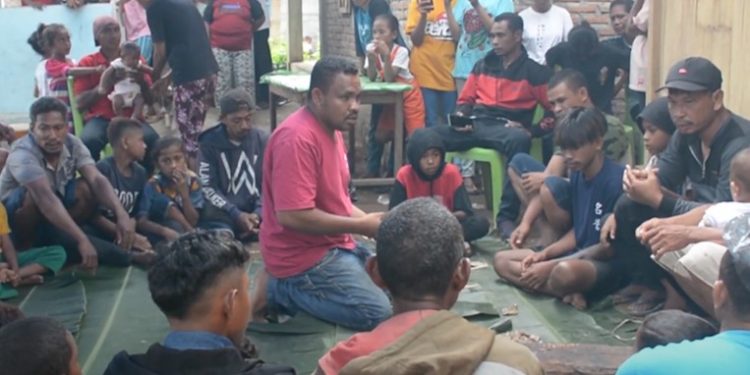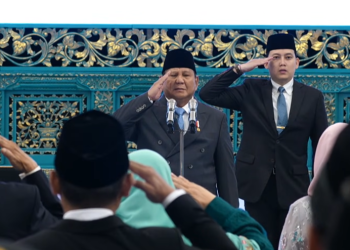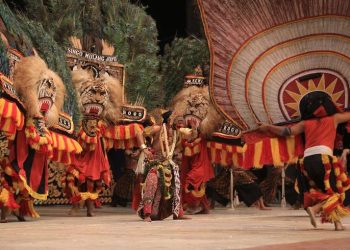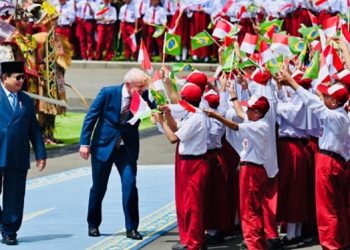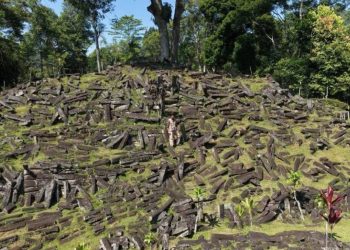Jakarta, Indonesia Sentinel — The Lamaholot tribe in East Flores, East Nusa Tenggara, Indonesia, continues to preserve its ancient cultural traditions, including the Tuno Manuk ritual. This ceremony, practiced in the Demondei Village in Wotan Ulumado District, serves as a spiritual restoration of harmony between the forces of the universe.
The harmonious relationship between the forces of the universe symbolized by the sun, moon, earth, and all living beings is believed to be disrupted by human actions. The Lamaholot tribe believed that this annual ritual serves as a spiritual act to restore balance and harmony within nature.
According to Kompas, the term “Tuno Manuk” translates to “burning chicken” in the Lamaholot language. The male chicken (manuk baran), seen as a divine emissary, represents men in the community and serves as a symbol of safety and prosperity for humans and the universe.
During the ceremony, the chickens are offered to Rera Wulan (Sun and Moon) and Tanah Ekan (Earth and its living beings), invoking blessings and protection.
The Ritual Procession
Tuno Manuk ritual is typically held mid-year, often in July, following the ancestral leader’s guidance. The chosen date is announced to all villagers, including those living elsewhere.
Each male participant is required to bring a healthy rooster. Standing at their front door, men or their eldest sons call upon ancestral spirits, seeking their presence to listen to their joys, sorrows, and prayers for protection and guidance.
Family members symbolically absolve their sins by spitting on the rooster. The chickens are then taken to ceremonial houses for blessings by the tribal leader before being offered to the ancestors.
The ceremony begins with calling the god and ancestral spirit by roasting a small chicken as an offering in front of the koke bale, a sacred house. If ants or insects consume the offering, it is seen as a divine approval for the ritual to proceed.
Chickens are presented one by one to the tribal leader, who prays over them before they are slaughtered. Their blood is poured over a flat stone called nuba nara, symbolizing the connection between the Creator (nuba) and humanity (nara).
A vital part of the ritual involves inspecting the chicken’s intestines, particularly a small protrusion known as tuber. A longer tuber signifies good health and prosperity, while a shorter one prompts the person it represents to seek spiritual cleansing and offer another chicken for blessings.
Read also : Lamaholot Tribe Lewak Tapo Ritual: A Mystical Tradition to Uncover the Cause of Death
Traditional Dance and Feast
Tuno Manuk ritual in Lamaholot Tribe is accompanied by Lian Namang. A traditional dance where participants form a circle, holding hands, singing, and exchanging poetic verses that express love and life’s struggles through metaphors.
As the sun rises, the chickens are prepared for the communal feast. Their hearts are collected and offered to Rera Wulan and Tanah Ekan as part of the closing ceremony. The chickens and rice are cooked in bamboo with young coconut water, stained red to signify life and vitality.
The ritual culminates in a communal feast at dusk. Men sit in circles near the koke bale, sharing the cooked chicken and rice served on waru leaves as plates. Each man receives specific parts of the chicken consisting of wings, head, legs, thighs, and tail to ensuring equal distribution.
The tribal leader concludes the event with a prayer in the local language before inviting everyone to share the meal.
Preserving Harmony
Lamaholot Tribe Tuno Manuk is more than a cultural tradition, it is a ritual of harmony and restoration. It is believed to bring prosperity, protection, and balance to the community.
By passing down this ancestral practice, the Lamaholot people maintain a sacred connection to their heritage, the nature, and the universe.
(Raidi/Agung)


